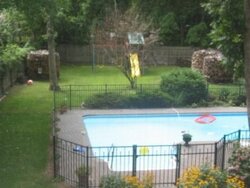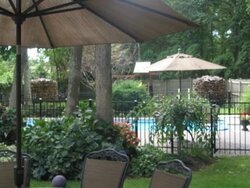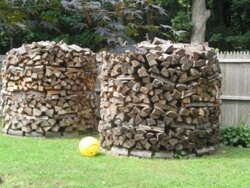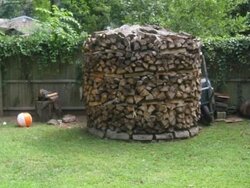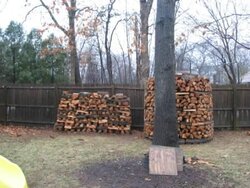Rockey said:
Apprentice_GM said:
Regarding previous comments:
<snip>
6) I don't think the tarp suggestion is a good one. The idea of an HH is to draw air over all the splits towards centre, then up and out like a chimney. Covering most of the stack prevents this, prevents air being drawn over and along the covered split.
6 - Tell me, what exactly do you think is going to draw the air in to the center of the HH? Trust me, every split in the center of the HH is going to be colder and receive dramatically less airflow than the splits on the outside of the HH without the aid of a fan.
Well, I think it's simple, but obviously yet to prove it. My contention is the thing which seasons a HH faster than normal stacks is increased airflow (there is no doubt that increased airflow seasons much faster so it is reasonable to assume that this is the main reason for a HH). Your question is why?
Airflow, even very light winds, flow around the HH and over the top. When the top is shaped like a dome or pyramid/cone it creates low pressure at the centre - just like a wing (of a plane, chopper blade etc) and this draws air up the middle, or up the chimney. This air has to come from somewhere, as it in turn creates a low pressure zone in the middle of HH. The air then comes from outside the HH, flowing along the splits. That is the main point, and I know it's my theory not some learned scientists - well I haven't seen it elsewhere - and I have another, additional theory.
Airflow around the side of the HH creates similar low pressure points, again like a wing, or like a boat at mooring (this is why 2 yachts accelerate towards each other on moorings and bang into each other - benefit of a catamaran but that's a different topic). So airflow is increased even without the top or chimney effect. In other words, my contention is if you built a cylinder of wood up to a ceiling, so air flows around sides but can't flow over the top, you would still get an increase in airflow across the splits compared to traditional rows or stacks. A poster in another HH thread here postulated similar thoughts for this point, but didn't or couldn't try to prove it.


